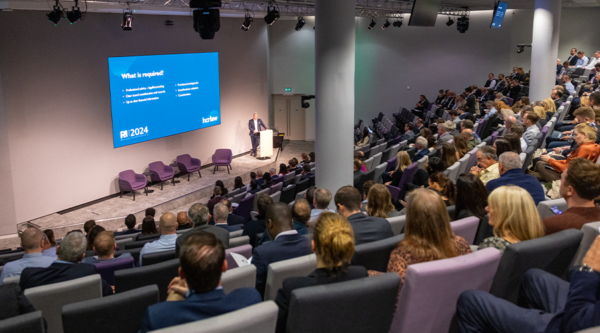

The Insolvency Service published a review of creditor’s voluntary liquidations (“CVL’s”) – a director-initiated process which must be administered by a licensed insolvency practitioner (“IP”) – on 27 December 2024 titled “CVL research report for the Insolvency Service”. This report was conducted as a follow up on the First Review of the Insolvency (England and Wales) Rules 2016 and, alongside measuring the efficiency of CVLs, addressed three main concerns; burial liquidations, CVL factories and pre-appointment fees.
Key findings
The Insolvency Service make the argument that the current CVL process is “inefficient”. The median cost of fees, as a percentage of the value of the estate, was 163% and the median recovery rate for creditors was 0%.
The report points out that the median length of time to complete a CVL in the UK is 712 days which is a far cry from Australia where only 10% of administrations are estimated to take more than 365 days – although this is not a direct comparison.
The research can be interpreted to show that CVLs are currently “ineffective”. As stated in the report, creditors receive no payments in 86% of cases and the median amount paid to creditors as a percentage of assets realised is 0%.
It is notable, however, that despite the median costs being 163% of the value of the estate, the fees of IPs are only 21%. The rest of the funds are attributed to legal fees, insurance, statutory advertising and so on.
Burial liquidations
The Insolvency Service has identified ‘burial liquidations’ as an ongoing concern which have previously been defined by Lord Agnew of Oulton DL as “an unholy trinity of company director, local accountant and so-called ‘friendly’ insolvency practitioner quietly liquidate a company on a voluntary basis with no questions asked as to how the director might have ripped value out of the company for his own benefit prior to the liquidation”, although he called them ‘buried liquidations’. The report relies on this definition but interprets the term to mean “CVL cases where an IP seeks to wind up and dissolve a company without conducting adequate investigations into the conduct of directors and/or not pursuing all of a company’s potential assets”.
Burial liquidations have been a cause for concern with a key issue being that an epidemic of such liquidations could have a wider impact on the confidence of the UK economy. The case of Neville Taylor is a key example. Acting director of over 400 companies, Mr Taylor has now been disqualified after £8,278,912 worth of company assets was reduced to £676,169 in under three years. The disposal of large sums of money will inevitably have an impact on society and it is therefore vital that a proper investigation is undertaken into the dealings of companies in breach.
The Insolvency Service recognises the importance of this but acknowledges that there is a crossover between the concerns regarding burial liquidations and the concerns around CVL factories.
CVL factories
The Insolvency Service has defined these as “relat[ing] to IPs or IP firms where CVLs are being advertised at a very low cost”, with the main concern being that inadequate investigations are being conducted due to the low fee. There is a similarity between CVL factories and burial liquidations, in that the main concern relates to inadequate investigations into director conduct, antecedent transactions, and the current status of the company. Indeed, there is a small association between a CVL having lower fees and not investigating the conduct of the company’s director, but the Insolvency Service report is quick to point out that this may also correlate to smaller companies where the process is simpler, and which do not require significant investigation. We interpret their findings to indicate that this is not an immediate concern, despite the association.
CVL pre-appointment fees
The Insolvency Service has identified pre-appointment fees as a potential concern,, highlighting the fact that these fees are not subject to approval by creditors and the median cost of pre-appointment fees is 51% of the total fees. The lack of transparency has been contrasted with the process in administration, where creditors can approve expenses that were incurred pre-appointment.
The report states that there is association between higher pre-appointment fees and lower rates of investigation time. This is theorised to be related to the IPs being able to guide the conduct of directors before insolvency, or having the ability to investigate before the company enters liquidation. Ultimately, despite the lack of transparency still being a concern, the lack of a strong relationship between pre-appointment fees and lack of investigation means that they are not an immediate concern.
An inefficient process?
In conclusion, although the concerns identified in the First Review are not as immediate as once thought, the CVL Research Report has revealed that the CVL process is currently inefficient and to some degree ineffective. Given that CVLs currently make up around 85% of corporate insolvency processes in the UK, this is a cause for concern especially as it has been identified that statutory requirements and disbursements make up most of the bloat.
Therefore, it seems apparent to us that the process should be revised. The report itself has recommended further research, such as a comparison of different international approaches and more regular monitoring of key statistics, which we hope will shed further light on the current status of the CVL process in the UK.









